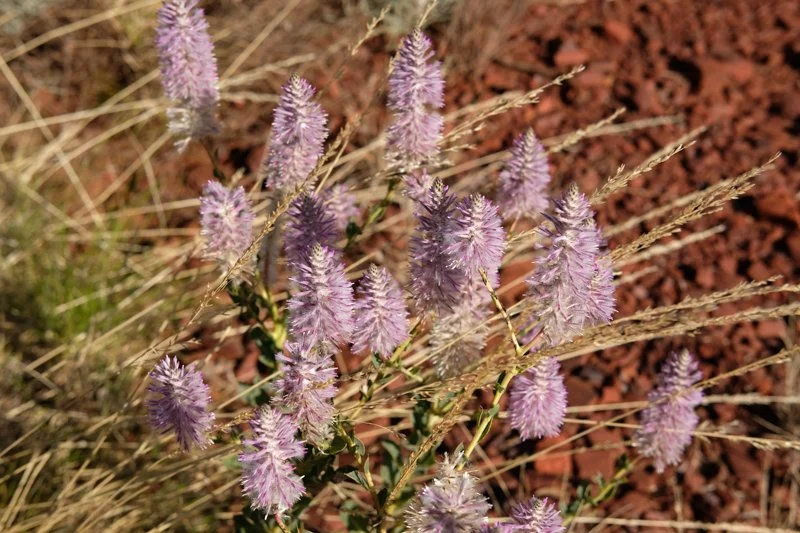Plant of the month: Mulla mulla
Mulla mulla seems to be everywhere these days! I’ve spotted it at the Laak Boorndap test garden, Melbourne International Flower and Garden Show, and the glorious verge garden of Jac Semmler. On my recent trip to the Pilbara, I was delighted to see it growing in its natural habitat.
In its native habitat in arid Australia, this low-growing perennial erupts into masses of feathery mauve flowers after spring rains, and continues flowering for most of the year. It’s best suited to dryer climates in temperate, arid and dry tropical regions; growing well in rockeries and containers with a good free-draining potting mix.
Although shorter lived, Ptilotus exaltatus (mauve) would make a great substitute for the feathery heads of weedy Pennisetum or the mauve spires of Agastache. The pale green to cream flowering P. macrocephalus is thought to be pollinated by moths, and would make a lovely textural addition to a refined garden palette of green and whites.
Tammy Huynh recently showed how to pot up and care for one on Gardening Australia.
Plant info
Botanical name: Ptilotus spp. (Information below is for P. exaltatus)
Common names: Mulla mulla, Pussy Tails, Pink Foxtail, Showy Foxtail, Featherheads
Family: Amaranthaceae
Type: Small shrub, short-lived clumping perennial
Origin: Australia, most diversity in WA
Height: 60-80cm
Spread: 50cm
Uses: Cut flower, groundcover, mass planting, rockery, container gardening, attracts bees and butterflies, poolside planting
Flowering time: Most of the year, peaking in spring-summer
Growing notes
Light: Full sun
Water: Low (well-drained soil)
Care: Seedlings susceptible to snails and slugs. Ensure soil is free-draining, don’t overwater, check for signs of root rot and fungal problems in humid areas.
Propagation: Seeds have poor germination rates, so grow from seedlings for best success









